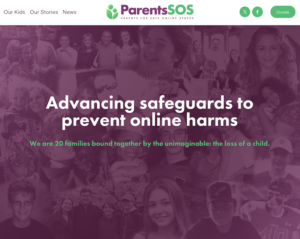April 1, 2015
To all principals, staff, school boards, education government, and health officials,
In my capacity as a pediatric occupational therapist, biologist, speaker, and author on the subject of the impact of technology on child development and learning, I’m writing to you on behalf of students, teachers, and parents requesting the urgent removal of wireless radiation from all school environments. I ask that you please take into consideration the following guiding principles regarding wireless radiation, and make the decision to revert to Ethernet cabled only devices to ensure immediate and ongoing safety for your students and staff.
Guiding principles for the decision to remove wireless radiation from school environments:
- Minimize Risk and Maximize Safety.
- Wireless radiation has not been proven safe (WHO 2011).
- Recent research indicates wireless radiation causes harmful effects to adult humans (Avendano 2012, Hardell 2013).
- Long term effects of wireless radiation on children are unknown at this time (AAP 2013).
- Children have thinner skulls, more aqueous bodies, and have rapidly developing cells, indicating they are exceedingly more vulnerable to harmful effects from wireless radiation than adults (AAP 2013, C4ST 2015).
- The American Academy of Pediatrics and the Canadian Pediatric Society recommends no more than 1-2 hours total technology use per day, including educational technology. Many schools exceed these expert guidelines (AAP 2014).
- Weigh Risk vs. Benefit.
- Education technology is not evidence based and is laden with conflict of interest e.g. manufacturers claims are financially motivated, and are not substantiated by university level research.
- Traditional and standardized teaching methods have substantive research support and evidence, yet are being rapidly replaced with education technology.
- Risks associated with the use of technology by children are as follows:
- Sedentary nature of technology use is causally related to the recent rise in obesity/diabetes, developmental delay and learning difficulties (Tremblay 2011, HELP EDI Mapping 2009/13, Ratey 2008, PISA 2012).
- Isolating factor of technology use is associated with escalation in social impairments, mental illnesses (including adhd and autism), and self-regulation difficulties (Houtrow 2014).
- Overstimulation from technology use is a causal factor in rise in attention deficit, aggression, sleep disturbance, and chronic stress from hyper-arousal of the sympathetic nervous system (Christakis 2004, Gentile 2009, Markman 2010, Bristol University 2010).
- Neglect of students by teachers and support staff who are engaged in their own personal technology, is unfortunately common.
- Consequently, the risks associated with using education technology far outweigh the dubious benefits.
- When In Doubt, Act With Caution.
- Existing research on harmful effects of wireless radiation on adults, indicates taking a cautionary approach when considering same radiation exposure to children (AAP 2014). Rapid cell turnover in children creates particular concern regarding potential DNA damage from wireless radiation, and consequent susceptibility to cancer. While rise in cancer incidence is becoming more apparent, rise in rates of cancer in children will not be observable until adulthood.
- Removal of wireless radiation and reversion to Ethernet cabled devices, will ensure immediate and long term safety to all students, teachers, and support staff.
- Defaulting to a remote authority regarding removing wireless radiation from schools, is not acting in the best interests of students and staff, and may not be defensible in a court of law.
- The implications of failure of schools to act with caution now regarding wireless radiation, are horrific in both scope and magnitude, and constitute neglect of children.
For additional research references regarding the impact of technology on children, please see below or visit http://www.zonein.ca/, Fact Sheet under Info section. For any additional information, please contact Cris Rowan at info@zonein.ca or 1888-8zonein.
The following Globe and Mail article by Sheryl Ubelecker on May 12, 2015 “Experts urge caution with use of wireless device” provides current status of government initiatives in the area of addressing growing wireless radiation concerns.
Respectfully,
C Rowan
Cris Rowan, BScBi, BScOT, SIPT, AOTA Approved Provider
CEO Zone’in Programs Inc. and Sunshine Coast Occupational Therapy Inc.
6840 Seaview Rd. Sechelt, BC CANADA V0N3A4
604-885-0986 p, 604-885-0389 f, 604-740-2264 c, crowan@zonein.ca email
Websites: www.zonein.ca, www.suncoastot.com, www.virtualchild.ca; Blog: www.movingtolearn.ca
Book: “Virtual Child – The terrifying truth about what technology is doing to children”
Research References
American Academy of Pediatrics, Letter to Federal Communications Commission on August 29, 2013; retrieved on February 26, 2014 at http://apps.fcc.gov/ecfs/document/view?id=7520941318.
American Academy of Pediatrics, Policy Statement – Children, Adolescents, and the Media, Council on Communications and Media; retrieved on February 26, 2014 from http://pediatrics.aappublications.org/content/132/5/958.full
Avendano, C., Mata, A., Sanchez Sarmiento C. A., Doncel, C. F. Use of laptop computers connected to internet through Wi-Fi decreases human sperm motility and increases sperm DNA fragmentation. Fertility and Sterility. January 2012; 97(1): 39-45. Retrieved on March 18, 2014 from http://www.fertstert.org/article/S0015-0282(11)02678-1/abstract
Bristol University: School for Policy Studies News (2010). Available at: http://www.bristol.ac.uk/sps/news/2010/107.html
C4ST: Dr. Oz Alert – Why Cell Phones Could Cause Cancer in Kids (2015). Available at: http://www.c4st.org/news/educate-yourself/dr-oz-alert-why-cell-phones-could-cause-cancer-in-kids.html
Christakis DA, Zimmerman FJ, DiGiuseppe DL, McCarty CA. Early television exposure and subsequent attentional problems in children. Pediatrics. 2004; 113 (4): 708-713.
Gentile, D. Pathological Video-Game Use Among Youth Ages 8 to 18: A National Study. Psychological Science. 2009 May;20(5):594-602. doi: 10.1111/j.1467-9280.2009.02340.x.
Hardell, L., Carlberg, M., Soderqvist, F., Hansson, K. Pooled analysis of case-control studies on acoustic neuroma diagnosed 1997-2003 and 2007-2009 and use of mobile and cordless phones International Journal of Oncology. 2013: 43(4); 1036-1044. DOI: 10.3892/ijo.2013.2025.
Healthy Early Learning Partnership – Early Development Inventory Maps for British Columbia, University of British Columbia; retrieved on February 26, 2014 from http://earlylearning.ubc.ca/maps/edi/bc/.
Houtrow, A. J., Larson K., Olson, L. M., Newacheck, P. W., Halfon, N. Changing Trends of Childhood Disability, 2001-2011. Pediatrics. Available at http://pediatrics.aappublications.org/content/early/2014/08/12/peds.2014-0594.abstract
Markman, A. (2010) Ulterior Motives- How goals seen and unseen drive behaviours. Psychology Today. Retrieved from http://www.psychologytoday.com/blog/ulterior-motives/201003/the-broad-view-research-video-games-and-aggression on March 11, 2014.
Ratey JJ, Hagerman E (2008). Spark: The Revolutionary New Science of Exercise and the Brain. Little, Brown and Company, New York.
Tremblay, M.S., LeBlanc, A.G., Kho, M.E., Saunders, T.J., Larouche, R., Colley, R.C., Goldfield, G., Gorber, S.C. (2011) Systematic review of sedentary behaviour and health indicators in school-aged children and youth. International Journal of Behavioral Nutrition and Physical Activity 2011, 8:98 doi:10.1186/1479-5868-8-98
World Health Organization – International Agency for Research on Cancer, Press Release No. 208, May 31, 2011. Retrieved on June 1, 2015 at http://www.iarc.fr/en/media-centre/pr/2011/pdfs/pr208_E.pdf
© Cris Rowan, Zone’in Programs Inc. 2015




2 Responses
Very interesting article. Our government and each of us must do everything possible for kids safety! Thank you for this information.
All I can say to you Cris Rowan, is Thank You. It’s a hard message to sell, but you keep at it, this gives me hope. I will continue spreading the word the best way I can in my life too.
I want to send this letter to my kids high school!
All the best to you and your work,
Shannon